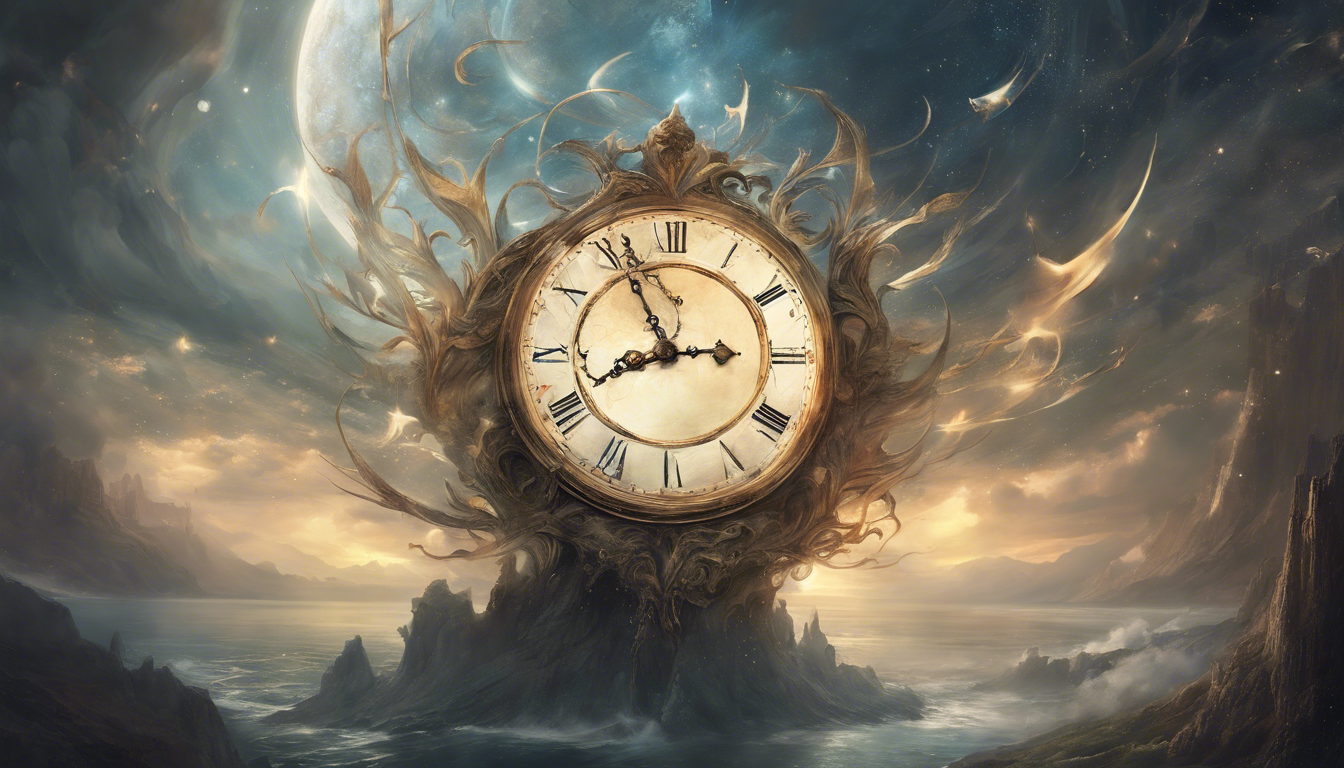The Significance of Time Symbolism in Literature
Exploring Time Symbolism in Literary Works
In literature, time symbolism plays a crucial role in conveying deeper meanings and themes. Through the representation of time, authors can explore concepts such as mortality, change, and the cyclical nature of life. Time symbolism adds layers of complexity to a story, inviting readers to contemplate the passage of time and its impact on characters and events.
The Power of Past, Present, and Future
One of the most common uses of time symbolism in literature is the representation of the past, present, and future. The past often symbolizes memory, nostalgia, or unresolved issues. The present signifies the current state of affairs or the immediacy of a situation. The future can represent hope, uncertainty, or the potential for change. By weaving these temporal elements into a narrative, authors can create a rich tapestry of meaning that resonates with readers.
Symbols of Time in Different Cultures
Across different cultures and literary traditions, time symbolism can vary widely. For example, in Western literature, clocks and hourglasses are commonly used to symbolize the passage of time and the inevitability of death. In Eastern literature, concepts such as the cyclical nature of time or the interconnectedness of past, present, and future may take center stage. By exploring how time symbolism is depicted in various cultural contexts, readers can gain a deeper appreciation for the universal themes that underpin storytelling.
Time Symbolism in Specific Literary Works
Numerous literary works prominently feature time symbolism as a central theme. For instance, in **Gabriel Garcia Marquez’s** “One Hundred Years of Solitude,” time is portrayed as circular and unending, reflecting the cyclical nature of history and human experience. In **Virginia Woolf’s** “Mrs. Dalloway,” the flow of time is fragmented and nonlinear, mirroring the protagonist’s internal struggles and fragmented sense of self. By delving into these works and analyzing the nuances of their time symbolism, readers can uncover hidden depths and layers of meaning.
In conclusion, the significance of time symbolism in literature cannot be overstated. Through the use of temporal elements such as past, present, and future, authors create intricate narratives that explore complex themes and emotions. By delving into the world of time symbolism in literary works, readers can unravel the mysteries of existence and gain a newfound appreciation for the power of storytelling. Time, as a symbol, transcends cultural barriers and speaks to the fundamental aspects of the human experience, making it a timeless motif in the world of literature.
Interpreting Time as a Metaphor in Art and Culture

The Concept of Time in Art
Artists often use time as a metaphor in their creations to convey deeper meanings and evoke emotions. Time can be represented in various ways, such as through the depiction of aging, decay, or the cyclical nature of existence. In paintings, sculptures, and other art forms, the passage of time is captured and frozen in a moment, allowing viewers to reflect on the transient nature of life.
Symbolism of Time in Cultural Expressions
In cultural expressions, time serves as a powerful symbol that reflects societal values, beliefs, and aspirations. For example, ancient civilizations used sundials and hourglasses to measure time, symbolizing the importance of structure and order in their societies. In modern culture, time is often depicted as a relentless force that dictates our daily routines and shapes our experiences.
Interplay of Time and Memory
The relationship between time and memory is a recurring theme in art and culture. Memories are often portrayed as fragments of the past that are influenced by the passage of time, creating a sense of nostalgia or longing for what once was. Artists and storytellers use this interplay to explore themes of identity, loss, and the impermanence of life.
Timelessness in Artistic Creations
Despite its ephemeral nature, art has the power to transcend time and resonate across generations. Masterpieces from different eras continue to inspire and captivate audiences, proving that creativity is a timeless force that defies the constraints of time. By interpreting time as a metaphor, artists infuse their works with enduring significance that transcends the boundaries of the present.
Symbolic Representation of Time in Religious and Mythological Contexts

Time in Sacred Traditions
In various religious and mythological contexts, time is not merely a linear progression, but a multidimensional concept intertwined with symbolism and spirituality. Different cultures have imbued time with profound meaning, utilizing symbols to represent its cyclical nature and eternal essence.
Ancient Mesopotamia: The Cosmic Wheel of Time
In Ancient Mesopotamian beliefs, time was often depicted as a cosmic wheel or spiral, symbolizing the eternal cycle of life, death, and rebirth. The Zodiac served as a map of time, with each constellation representing a different aspect of existence and influencing human destiny.
| Constellation | Symbolism |
| Pisces | Symbol of duality and spiritual transcendence |
| Leo | Symbol of power, leadership, and courage |
Hinduism: The Eternal Dance of Shiva
In Hindu mythology, time is personified by Lord Shiva, who performs the cosmic dance of creation, preservation, and destruction. This dance, known as the Tandava, symbolizes the eternal rhythm of time and the cyclical nature of the universe.
Native American Traditions: The Medicine Wheel
Native American cultures often use the Medicine Wheel to represent the interconnectedness of all beings and the cyclical nature of life. Each direction on the wheel corresponds to a different aspect of existence, reflecting the eternal flow of time and energy.
The symbolic representation of time in religious and mythological contexts serves to remind us of the timeless nature of existence and the interconnectedness of all living beings. By exploring these symbols and their meanings, we gain a deeper understanding of the universal rhythms that govern our reality.
Time, as portrayed in these sacred traditions, transcends mere minutes and hours, offering a glimpse into the eternal essence of the cosmos.
Time Symbolism in Modern Society and Technology

Exploring the Significance of Time in Today’s World
In modern society, time holds a profound symbolic meaning that goes beyond its practical aspect of measuring moments. Time has become a symbol of efficiency, productivity, and progress. With the advancement of technology, our relationship with time has evolved, shaping our lifestyles and behaviors in significant ways.
The Influence of Technology on Perceptions of Time
Technology has redefined how we perceive and interact with time. Smartphones, smartwatches, and other digital devices have made time a constant presence in our lives, blurring the boundaries between work and leisure. The immediacy of communication and information exchange has created a culture of instant gratification, where time is perceived as a precious commodity that must be maximized.
Time Management Tools and Apps
In response to the fast-paced nature of modern society, various time management tools and apps have emerged to help individuals organize their time more efficiently. From calendar apps to task management software, these tools aim to enhance productivity and reduce time wastage, reflecting society’s emphasis on optimizing every minute.
Branding and Time Symbolism
Brands also leverage time symbolism in their marketing strategies to convey messages of urgency, exclusivity, or timelessness. Limited-time offers, countdown clocks, and expiration deadlines are commonly used techniques to create a sense of scarcity and compel consumers to act quickly. By associating their products with time-sensitive promotions, brands tap into the psychological impact of time on consumer behavior.
The Cultural Significance of Time in Art and Media
Time symbolism is prevalent in art, literature, film, and other forms of media, reflecting society’s collective attitudes towards time. Themes of nostalgia, immortality, and the passage of time are recurrent motifs that artists use to provoke introspection and contemplation. Through creative expression, artists challenge societal perceptions of time and invite audiences to reflect on their own relationship with temporality.
Time symbolism in modern society and technology goes beyond mere measurement; it shapes our values, behaviors, and cultural expressions. By understanding the multifaceted significance of time, we can navigate the fast-paced world we live in with mindfulness and purpose, recognizing the power of time as not just a tool, but a symbol that influences our very existence.


Article written by Dera
Greetings, I am Dera, a 35-year-old individual with a deep passion for spirituality. Through my website, I aim to share my insights and knowledge to help others on their spiritual journey. Join me on the path to inner peace and enlightenment.